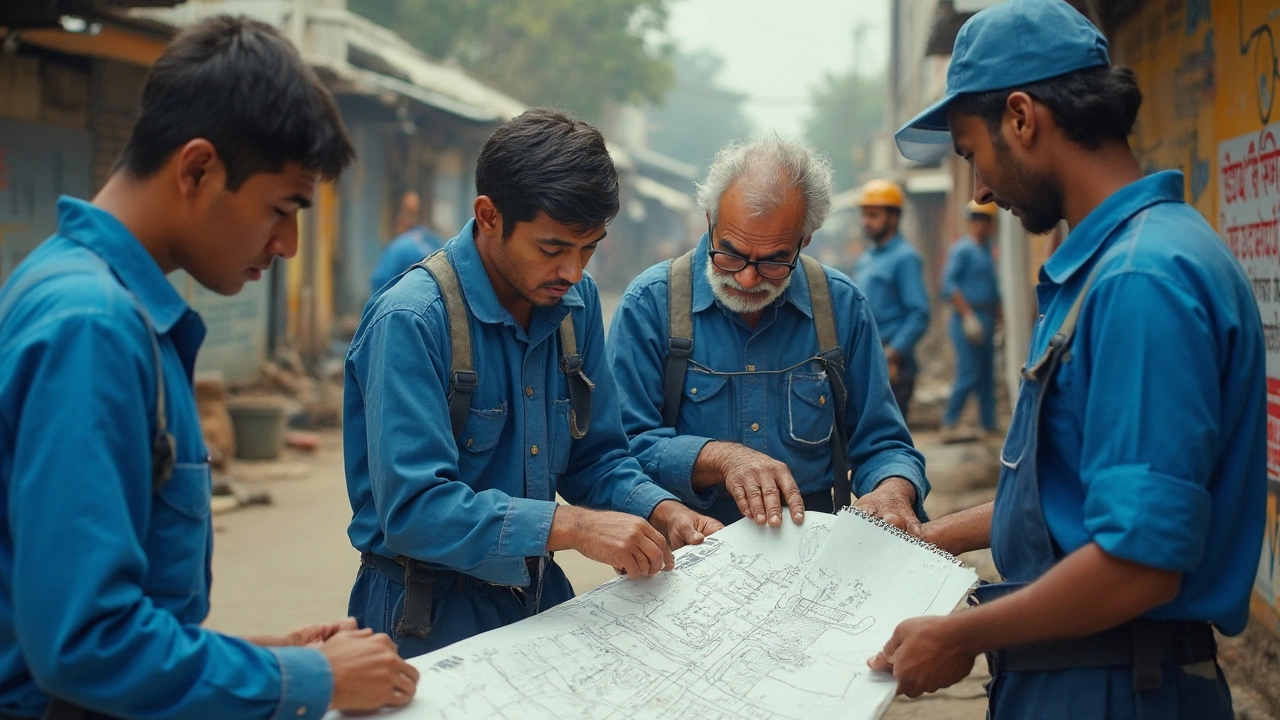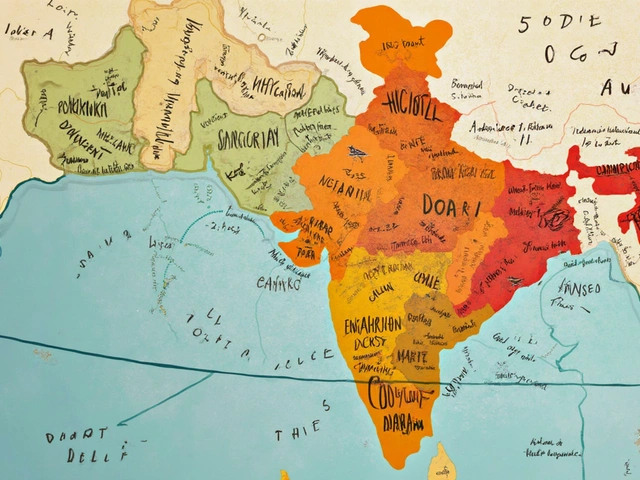If you’ve tried booking a plumber lately, you know the drill: days (or even weeks) of waiting, and sometimes the prices feel out of this world. It’s not just your luck. Across the country, there just aren’t enough plumbers to go around, and by the time you finally hear the words “I can come tomorrow,” you’ve probably tried every DIY fix in the book.
So why is it so tough? For starters, the number of people going into plumbing has dropped off. Schools have pushed university degrees for decades, while trade skills got left out in the cold. A lot of plumbers who started in the ’80s? They’re retiring now, and not enough new folks are stepping in to replace them. Simple supply and demand has jacked up both the wait times and the cost.
If you’re wondering why more young people aren’t taking up the trade, stick around. The process to become a licensed plumber isn’t as fast or simple as you might think. Between classroom learning, apprenticeships, and exams, jumping through the hoops takes years—so even if folks sign up today, those reinforcements won’t show up at your door anytime soon.
- Where Did All the Plumbers Go?
- What Does It Take to Become a Plumber?
- Hidden Roadblocks in Plumber Training
- How Homeowners Can Beat the Wait
Where Did All the Plumbers Go?
If you feel like there used to be more plumbers around, you’re not imagining things. The plumbing industry has been shrinking for years. According to the U.S. Bureau of Labor Statistics, about half of current plumbers are expected to retire by the early 2030s. That’s not some distant problem; it’s already biting now. The profession’s average age keeps going up, and there just aren’t enough newbies coming in to fill their shoes. So, you’re basically seeing the tail end of a big generational shift. It’s not just the older pros bowing out—there’s a hole on the other end because not enough people are signing up for trade schools.
What happened? Back in the day, learning a trade was considered a respectable path. High schools actually offered hands-on courses, and local businesses often helped students get real-world practice early on. By the time my daughter Elodie’s generation rolled around, you’d barely hear guidance counselors even mention plumbing as a career. The push for college degrees left trade jobs like plumbing off most people’s radar, no matter how in-demand they were.
There’s also a public perception problem. People tend to think plumbers only get called in for clogged toilets and leaky sinks, but the reality is way bigger—think new construction, stormwater design, or gas piping. When young people picture future jobs, nobody usually tells them the perks of this field: strong pay, job security, no student debt, and the potential to run your own business later on.
On top of all this, the U.S. is seeing a construction boom. New houses, apartments, and commercial buildings don’t go up without plumbing—and that’s putting more strain on a workforce that’s already stretched thin. Factor in a few unexpected supply chain hiccups (those 2020s shortages didn’t help) and you’ve got a perfect storm. If you’re waiting longer for a plumber—or can’t find one at all—that’s why.
So, the next time you’re stuck chasing someone to fix your pipes, remember: the real issue isn’t just your timing. It’s the nationwide plumber shortage that’s messing with everyone’s plans. The pipeline for training and attracting new pros is running dangerously low.
What Does It Take to Become a Plumber?
It’s way more complicated than just grabbing a wrench and fixing a leaky faucet. Here’s the real deal: becoming a plumber means going through a long checklist of training, classwork, real-world work, and paperwork. In most places, you need a high school diploma or GED to even get started. From there, almost everyone takes the apprenticeship route. You’re not just a helper fetching tools—you do real plumbing, but always with a licensed pro double-checking your work.
Usually, an apprenticeship lasts between 4-5 years. During this time, you’ll split your time doing actual plumbing jobs and taking classes that cover things like safety codes, blueprints, city rules, and basic math. For a lot of people, that means working full-time hours plus studying at night. You learn about water systems, drainage, how to install fixtures, and how to deal with weird emergencies—think burst pipes at 2 a.m.
- Apprenticeship: 4-5 years of paid hands-on work with classroom study (often 144 hours a year in class, plus 2,000 hours a year on the job).
- Certifications or Licensing: Most states require you to pass an exam that’s no joke—lots of code memorization and problem-solving.
- On-the-Job Training: Even after you pass the test, you’ll start as a “journey” plumber, not a master. It can take another 2-5 years before you earn your master license and can run your own crew or business.
The following table shows a quick look at common steps and timelines:
| Step | Typical Duration | What’s Involved |
|---|---|---|
| High School/GED | 4 years | Basic diploma required |
| Pre-Apprenticeship | 6 months - 1 year | Foundational trade skills, safety |
| Apprenticeship | 4 - 5 years | Hands-on work + classroom |
| Licensing Exam | Varies (after apprenticeship) | Pass state/local test |
| Journeyman | 2 - 5 years | Independent work, gain experience |
Some states let you skip pre-apprenticeship, but the rest? Non-negotiable. No shortcuts. That’s part of why there’s a plumber shortage—by the time someone is fully licensed, they’ve put in enough hours and exams to make most college degrees look easy. If you're thinking about this career or just curious, now you know—getting a plumber to your house isn’t easy partly because becoming one takes real grit and years of work.

Hidden Roadblocks in Plumber Training
Training to be a plumber isn’t as quick as signing up for a weekend class and grabbing a wrench. There are serious steps that anybody hoping to work in the field has to pass, and each step comes with its own headaches. These hurdles might not seem obvious when you’re stuck waiting on repairs, but they play a huge part in why the plumber shortage is such a big deal.
First, you can’t just decide to be a plumber one day and get hired the next. You need a high school diploma or GED, and then you’ll probably start off in a technical college or trade school, which can last up to two years. Not every community has a decent training program, though—some small towns barely have any options at all, so folks have to drive long distances just to take classes.
After those classes, you aren’t fully qualified yet. Next comes a paid apprenticeship, and this isn’t just a summer job deal. It runs anywhere from two to five years, depending on the state and program. During this time, apprentices work under a journeyman or master plumber and log thousands of hours fixing everything from leaky pipes to busted water heaters. It’s real work, but beginners still aren’t allowed to take most jobs on their own.
The test at the end? It’s no joke. Future plumbers study state codes, building safety rules, and some pass/fail rates can be brutal. If you don’t pass, you have to wait months to try again. Toss in the cost for exams and licensing fees—often hundreds of dollars—and you’ve got plenty of reasons that people drop out along the way.
There’s one more sneaky roadblock: mentorship. For an apprenticeship to work, you need some experienced plumbers willing to teach, but with so many people in the field retiring, slots are limited. If you can’t land a spot, your whole career path gets put on hold.
Add up these roadblocks and it’s no wonder training takes years, not months. For anyone itching to earn a steady paycheck fast, plumbing’s long road scares off lots of would-be pros.
How Homeowners Can Beat the Wait
Getting stuck on a plumbing waitlist stinks, but there are ways to improve your odds. First off, stop thinking of plumbing as a last-minute panic call—regular maintenance pays off big time. Prevent small leaks and clogs from turning into full-blown emergencies, and you’ll be in way less of a rush for a pro.
Build a relationship with a plumber before you need one. Don’t wait for the pipes to burst—search local reviews, ask neighbors, and give one or two plumbers a tryout with a small job (think: replacing a faucet or inspecting your water heater). Return customers often get bumped up higher on the list, especially during busy seasons.
If you do end up needing a plumber quick, here’s what helps your case:
- Be flexible. Plumbers juggle packed schedules. If you can be home on a weekday afternoon instead of only after 6 pm, you’ll score an earlier spot.
- Give clear details. Describe the problem accurately over the phone or text (even send a photo). This saves everyone time and lets the plumber prep or bring parts.
- Consider paying for an annual maintenance plan. Some local companies offer priority booking for members, and the annual cost often ends up cheaper than a single emergency call.
It’s also smart to get multiple quotes—but remember, price isn’t everything. A plumber who charges a bit more but shows up fast and does the job right is usually worth it. In a 2024 survey of over 1,000 homeowners, 65% said they’d gladly pay a little extra to lock in a guaranteed appointment within 48 hours.
Curious how long the average wait can drag out? Check this out:
| Region | Average Wait (Days) | Peak Wait (Days - Winter) |
|---|---|---|
| Midwest | 5.4 | 9 |
| West Coast | 6.2 | 11 |
| East Coast | 4.7 | 8 |
The plumber shortage isn’t going away soon, so knowing these tricks puts the odds in your favor. If you’ve got steady plumbing, keep it that way. If you’re in a jam, don’t be afraid to try small fixes like plunging a clog or shutting off the water—it might just buy you enough time until your plumber gets there.




